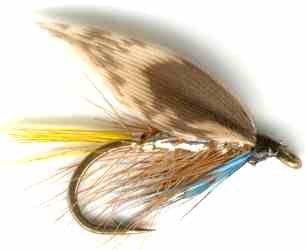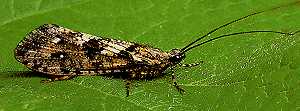Silver Invicta Caddis Sedge Wet Fly
The Silver Invicta is a variation of the original Invicta fly pattern. The Invicta Caddis wet fly pattern was first mentioned in James Ogden’s book “Ogden on fly tying” which was published in 1879. He began his fishing career in the 1840’s in Derbyshire, England.

CADDIS WET FLY PATTERNS. Hook size 10 12 14 - $US each
The Silver Invicta is an old fly that is still popular today because it continues to catch fish. I was designed to imitate a drowned caddis sedge fly with its long wing and hackles that imitate legs but I think this wet fly also works as a small bait fly imitation. The silver tummy and darker coloured back match the body markings of many a small fish. The silver helps attract the attention of nearby watchful brown or rainbow trout, as it reflects any ambient light.
It is best fished with a team of other wet flies or nymphs, on droppers tied under a strike indictor or buoyant bob fly on the surface. The Silver Invicta Caddis wet fly has outperformed the other flies time and time again. Trout seem to find it more attractive. In the mountain areas of Scotland, Wales, Ireland and Northern England you will find many high altitude hill lochs, lakes and reservoirs that offer day fishing. They provide sport fishing for the beginner as well as the seasoned expert. Some have a plentiful stock of small trout. Although small, they are avid feeders as they need to grow quickly and put on weight to get through the winter. These sporting Brownies are also fun to land as they are ferocious fighters and keep the most bored beginner fully alert.

The size of these highland stillwaters varies between 3 to 50 acres. You need a boat to exploit the bigger ones properly under the often changeable wind and weather conditions. The fly fisherman can position his boat to drift quietly downwind over the most productive areas. You can also searchable the inlets and bays along the shore or around any islands.
The bank fly fisherman, is more handicapped and must take advantage of an offshore wind or one that he can cast across. The wind can change directions up in the mountains a number of times during the day. This means that the fisherman may have to walk miles before he can get in a good position again. Weed growth close to the shore can also be a problem. Yes the weeds offer a good protective environment for the smaller fish but the bigger weed beds can prevent you casting to fishable waters. Even if you can wade out some distance this seldom overcomes the problem. Boat fishing offers the fly fisherman the ability to adapt to changing conditions with ease.
FACEBOOK READER'S COMMENTS
I use the silver
Invicta a lot and of course in Ireland we have the golden olive bumble which is a very close cousin of the original Invicta in colour if not style - Trevor Greene
CUSTOMER'S COMMENTS
I fish Derwent reservoir near Consett. Traditional lake flies work well. Tinsel-bodied wet flies work well in sunlight and drab ones in overcast conditions. My favourites are your Silver Invicta, Wickham’s fancy and Gold Invicta in that order for sunny days. The cinnamon sedge is my fly of choice when the caddis are hatching. Any black fly works when the midges are coming off and when it is cloudy. Just match the size. John Trentwell. Newcastle

